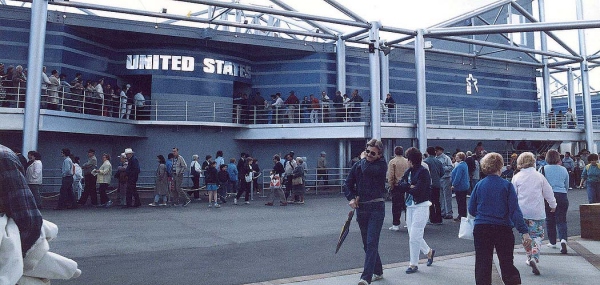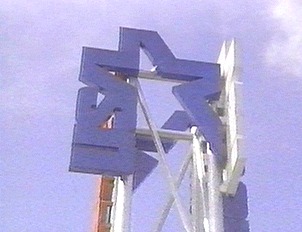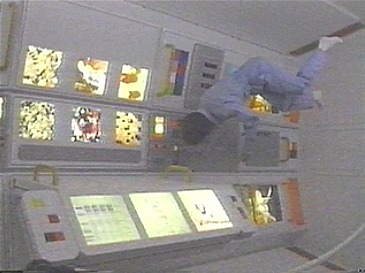MAIN INDEX
PURPLE
ZONE
RED
ZONE
BLUE
ZONE
PINK
ZONE
GREEN
ZONE
YELLOW
ZONE
INTERNATIONAL,
PROVINCIAL
& STATE
PAVILIONS
CORPORATE PAVILIONS & THEME EXHIBITS
BCTV (British Columbia Television)
General Motors (Spirit Lodge)
UNITED STATES OF AMERICA PAVILION

 In
1986, the U.S. boasted that within 25 years, America's space program
took
soil samples on Mars, close-up photographs of Jupiter, Saturn and
Uranus,
and put a man on the moon. The United States pavilion paid tribute to
the
heroic accomplishments of the men and women who advanced the frontiers
of space.
In
1986, the U.S. boasted that within 25 years, America's space program
took
soil samples on Mars, close-up photographs of Jupiter, Saturn and
Uranus,
and put a man on the moon. The United States pavilion paid tribute to
the
heroic accomplishments of the men and women who advanced the frontiers
of space.
Narrated by space-suited guides, the animated displays tracked the past and future of U.S. space flight.
A 70 mm film
took visitors
to the year 1994 and a rendezvous with a permanent U.S. space
station.
After the film, electronic doors beneath the movie screen opened onto a
space platform. Here, visitors could view a full-scale replica of
a permanently manned space station command centre and habitat
modules.
Larger than a football field and orbiting 250 miles above the earth,
the
station was scheduled to be fully operational within a decade.
On a sad note, the space shuttle Challenger exploded two months before Expo 86 opened, creating a rather sombre undertone to the pavilion's optimistic theme.
 FROM
THE BEST OF EXPO GUIDE
FROM
THE BEST OF EXPO GUIDE
Outer space is the sole focus of the U.S.A. pavilion. You enter through an exhibit hall which outlines the Mercury, Gemini and Apollo missions and focuses on the studies of other planets in the solar system. You then take a journey aboard the space shuttle to an orbiting space station.
HIGHLIGHTS
-- The
entrance contains
a dedication to the astronauts killed in the Challenger tragedy earlier
this year.
-- See models of
Voyager
satellites and Mercury spacecraft. There is also a lunar landing
module used on Apollo missions and pictures taken of Saturn, Venus,
Mars
and Jupiter.
-- You can learn
about
the concept of weightlessness, first in the audio-visual presentation
of
a shuttle flight and space walk, and later in a walk-through model of
the
interior of a space station.
-- Stay a minute
in the
large space station after the audio visual presentation as the crowd
will
clear, leaving you a chance to take in this imposing "place in space."